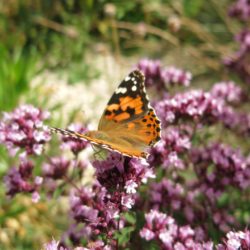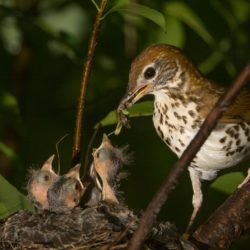by Jack Brodie, James Hitchmough, and Michael Livingstone There is a crisis in the UK, and many other developed countries, in the decline of a wide range of insects that…
Landscaping for Wildlife
Seeing and learning about wildlife is an enriching experience that anyone can enjoy. When landscapes provide food, shelter, water, and nesting areas for reproduction, a rich variety of life follows. The result is a healthier, more resilient ecosystem for all inhabitants.
Plants for Birds: Plant It and They Will Come
by Tod Winston Plant It and They Will Come: Such is the mantra of the modern bird-friendly gardening movement, founded in the growing scientific consensus that by increasing native plant…
Eco-Answers from the Pros: Urban Pollinators
I work on a golf course in the middle of a city, (Newark, NJ). I am always looking to put in natural areas and promote pollinator plants. My question is…
Eco-Answers from the Pros: Bee Tubes in Spring
The mason bees filled most of the tubes in the house this spring and the ends were sealed with the mud. Now in August, the mud seal is gone and…
More than Just a Pollinator Garden
by Tara Mitchell The landscape has long been shaped by economics. Marketing tells us which plants are weeds and which are desirable, which insects are pests to be eradicated and…
Green Landscapes on Solar Sites—an Enormous Business Opportunity
Public Benefits from Ecological Landscapes Include Pollinator Habitat, Improved Water and Soil Quality by Rob Davis Dramatic changes in cost can drive dramatic changes in customer behavior—and create extraordinary business…
The Role of Native Cultivars in the Ecological Landscape: Evaluating Insect Preferences and Nectar Quality in Phlox and Its Cultivars
by Keith Nevison Take a trip to your local nursery and head to the native plant section. Do you come across any cultivars of native plants (“nativars”) among their offerings?…
Growing on the Wild Side
Creating a Backyard Demonstration Area for People and Wildlife by Rachel Stevens Watch us “grow” as we develop a backyard wildlife gardening demonstration area on a conservation property along the…
Book Review: Pollinators of Native Plants
Attract, Observe and Identify Pollinators and Beneficial Insects with Native Plants Written by Heather Holm Published by Pollination Press LLC, Minnetonka, MN, 2014 Reviewed by Bruce Wenning Heather Holm is…
The Million Pollinator Garden Challenge: Will You Accept?
by Matthew Shepherd The National Pollinator Garden Network (NPGN) is a newly created partnership of organizations involved with pollinator conservation, wildlife gardening, and gardens. The network was initiated as part of…
Buying Bee-Friendly Plants: Neonicotinoid-Free Nurseries, Growers, and Seed Sources
by Genevieve Schmidt Recently I’ve heard from a number of wildlife gardeners who say they are no longer buying plants from regular retail nurseries because there is no way of…
Creating a Community Habitat for Pollinators
by Willow Cheeley, James McCarthy, and Debb Putnam The winter of 2015 will be one for the record books. It was cold, snowy, and after weeks of shoveling snow off…



